Kings College London (KCL)
Latest uploads at Kings College London (KCL). Looking for notes at Kings College London (KCL)? We have lots of notes, study guides and study notes available for your school.
-
664
-
28
-
52
Majors at Kings College London (KCL)
Notes available for the following studies at Kings College London (KCL)
-
A-level 1
-
BA Geography 1
-
Biochemistry 4
-
Biology 1
-
Biomedical science 1
-
Biomedical/Medicine 5
-
BSc Biomedical Sciences 19
-
BSc Business Management 1
-
BSc Psychology 8
-
Business 1
-
Dentistry/ Medicine undegraduate 1
-
English Literature 1
-
French with English 1
-
International Management 20
-
International Relations 1
-
Kings College London 168
-
Law LLB 26
-
Politics, Philosophy and Law 2
-
Software Development 2
Popular books Kings College London (KCL)
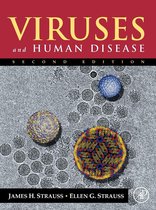
Ellen G. Strauss, James H. Strauss • ISBN 9780123737410
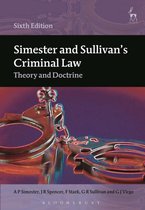
A P Simester, John Spencer • ISBN 9781849467223

Caramani • ISBN 9780199574971

Andrew Dessler, Andrew E. Dessler • ISBN 9781107480674

Sir Jack Beatson, Hon. Andrew Burrows • ISBN 9780198734789
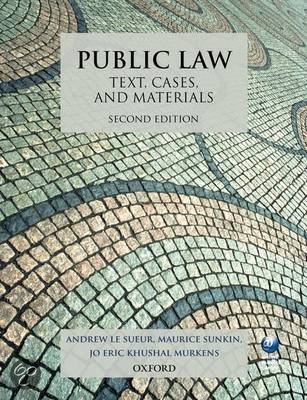
Andrew Le Sueur, Maurice Sunkin • ISBN 9780199644186
Latest notes & summaries Kings College London (KCL)
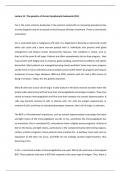
This essay focuses on the contents of The genetics of chronic lymphocytic leukaemia (CLL). There may be some additional reading. CLL is the most common leukaemia in the western world with an increasing prevalence due to early diagnosis and an increased survival because of better treatment. There is some family association.CLL is associated with a malignancy of B cells. It is diagnosed in blood by an abnormal raised white cell count and a bone marrow packed with it.
- Essay
- • 5 pages's •
-
Kings College London•Cancer genetics
Preview 2 out of 5 pages
This essay focuses on the contents of The genetics of chronic lymphocytic leukaemia (CLL). There may be some additional reading. CLL is the most common leukaemia in the western world with an increasing prevalence due to early diagnosis and an increased survival because of better treatment. There is some family association.CLL is associated with a malignancy of B cells. It is diagnosed in blood by an abnormal raised white cell count and a bone marrow packed with it.

This essay focuses on the contents of Uncovering the cancer genome. There may also be some additional readings. Cancer is a common complex disease, caused by a mix of the environment and genetics. Hereditary cancers are rare types of cancers that account for 5 to 10% of all cancer cases. Examples include the autosomal dominant Lynch syndrome which is associates with an increased risk of colorectal cancer and the autosomal recessive Fanconi Anaemia which increases the risk of leukaemia. Sporadic ...
- Essay
- • 3 pages's •
-
Kings College London•Cancer genetics
Preview 1 out of 3 pages
This essay focuses on the contents of Uncovering the cancer genome. There may also be some additional readings. Cancer is a common complex disease, caused by a mix of the environment and genetics. Hereditary cancers are rare types of cancers that account for 5 to 10% of all cancer cases. Examples include the autosomal dominant Lynch syndrome which is associates with an increased risk of colorectal cancer and the autosomal recessive Fanconi Anaemia which increases the risk of leukaemia. Sporadic ...
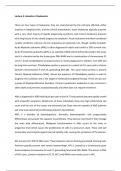
This essay focuses on the contents of Genetics of leukaemia. There are four types of leukaemia, they are characterised by the cell type affected, either myeloid or lymphoid cells, and the clinical presentation, acute leukaemia typically presents with a very short history of rapidly progressing symptoms and chronic leukaemia presents with long history of very slowly progressive symptoms. Acute leukaemia are often considered curable conditions whereas chronic leukaemia are generally not, though re...
- Essay
- • 3 pages's •
-
Kings College London•Cancer genetics
Preview 1 out of 3 pages
This essay focuses on the contents of Genetics of leukaemia. There are four types of leukaemia, they are characterised by the cell type affected, either myeloid or lymphoid cells, and the clinical presentation, acute leukaemia typically presents with a very short history of rapidly progressing symptoms and chronic leukaemia presents with long history of very slowly progressive symptoms. Acute leukaemia are often considered curable conditions whereas chronic leukaemia are generally not, though re...

This essay focuses on the inherited cancer syndromes. Some examples include Lynch syndrome, familial adenomatous polyposis (FAP), BRCA1/2 related disease, multiple endocrine neoplasia and Li-Fraumeni syndrome. Lynch syndrome is caused by impaired DNA repair, FAP is caused by a faulty TSG, BRCA1/2 related disease is caused by impaired double stranded break repair and Li-Fraumeni syndrome is associated with TP53 defects.
- Essay
- • 3 pages's •
-
Kings College London•Cancer genetics
Preview 1 out of 3 pages
This essay focuses on the inherited cancer syndromes. Some examples include Lynch syndrome, familial adenomatous polyposis (FAP), BRCA1/2 related disease, multiple endocrine neoplasia and Li-Fraumeni syndrome. Lynch syndrome is caused by impaired DNA repair, FAP is caused by a faulty TSG, BRCA1/2 related disease is caused by impaired double stranded break repair and Li-Fraumeni syndrome is associated with TP53 defects.
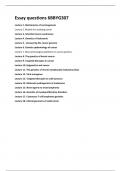
Lecture one focuses on the Mechanisms of carcinogenesis. The lifetime risk for any individual to develop cancer is 50%. 38% of these cases are preventable, including melanoma, lung cancer and breast cancer. 15% of cancer cases are related to smoking and 3%-10% are related to obesity. Predisposing factors to cancer include toxins, inflammation and immunity, genetic mutations, hormones and ethnicity. Risk factors include occupation, family and medical history, age, gender, ethnicity, genes, immuni...
- Essay
- • 5 pages's •
-
Kings College London•Cancer genetics
Preview 2 out of 5 pages
Lecture one focuses on the Mechanisms of carcinogenesis. The lifetime risk for any individual to develop cancer is 50%. 38% of these cases are preventable, including melanoma, lung cancer and breast cancer. 15% of cancer cases are related to smoking and 3%-10% are related to obesity. Predisposing factors to cancer include toxins, inflammation and immunity, genetic mutations, hormones and ethnicity. Risk factors include occupation, family and medical history, age, gender, ethnicity, genes, immuni...

These essays cover in depth lecture 3 in Immunology of Human Disease. The two questions allow to organise and structure your response for your exam. These questions are: Explain the principle of antibody diversification which occurs for vaccination to be effective; and Explain the principles of vaccination, elucidating the mechanisms through which vaccines induce adaptive immune responses. Discuss the role of B cells, antibodies, and T cells in mounting an effective immune response upon vaccinat...
- Class notes
- • 4 pages's •
-
Kings College London•Immunology of Human Disease
Preview 1 out of 4 pages
These essays cover in depth lecture 3 in Immunology of Human Disease. The two questions allow to organise and structure your response for your exam. These questions are: Explain the principle of antibody diversification which occurs for vaccination to be effective; and Explain the principles of vaccination, elucidating the mechanisms through which vaccines induce adaptive immune responses. Discuss the role of B cells, antibodies, and T cells in mounting an effective immune response upon vaccinat...

This essay covers all the lecture content of lecture 8 of Immunology of Human Disease. It focuses on two main aspects: the intrinsic, innate and adaptive immune barriers to viral infection; and pattern recognition. To maintain health, the immune system and body defences are coordinated to block a majority of infections. Pattern recognition involves the recognition pathogen associated molecular patterns by PRRs upon virus infection of host cells.
- Package deal
- Class notes
- • 4 pages's •
-
Kings College London•Immunology of Human Disease
-
8 lectures on Immunology of Human Disease - 6BBBI608• Byines5
Preview 1 out of 4 pages
This essay covers all the lecture content of lecture 8 of Immunology of Human Disease. It focuses on two main aspects: the intrinsic, innate and adaptive immune barriers to viral infection; and pattern recognition. To maintain health, the immune system and body defences are coordinated to block a majority of infections. Pattern recognition involves the recognition pathogen associated molecular patterns by PRRs upon virus infection of host cells.

This essay covers all the content of lecture 7 of Immunology of Human Disease. The essay question is: Discuss the fundamental hallmarks of cancer, elucidate the challenges presented by the tumour microenvironment in relation to immune responses, and delineate the prerequisites for an efficient T cell-mediated immune response.
- Package deal
- Class notes
- • 4 pages's •
-
Kings College London•Immunology of Human Disease
-
8 lectures on Immunology of Human Disease - 6BBBI608• Byines5
Preview 1 out of 4 pages
This essay covers all the content of lecture 7 of Immunology of Human Disease. The essay question is: Discuss the fundamental hallmarks of cancer, elucidate the challenges presented by the tumour microenvironment in relation to immune responses, and delineate the prerequisites for an efficient T cell-mediated immune response.

These essays cover all the content of lecture 6 in Immunology of Human Disease. The first question delves into he immuno-pathogenesis of psoriasis and atopic dermatitis, highlighting their key immunological differences. There are 4 subquestions focusing on different aspects of the diseases. The second question delves into analysing the current challenges in the treatment of inflammatory skin diseases, discussing the limitations and advancements in therapeutic approaches.
- Package deal
- Class notes
- • 5 pages's •
-
Kings College London•Immunology of Human Disease
-
8 lectures on Immunology of Human Disease - 6BBBI608• Byines5
Preview 2 out of 5 pages
These essays cover all the content of lecture 6 in Immunology of Human Disease. The first question delves into he immuno-pathogenesis of psoriasis and atopic dermatitis, highlighting their key immunological differences. There are 4 subquestions focusing on different aspects of the diseases. The second question delves into analysing the current challenges in the treatment of inflammatory skin diseases, discussing the limitations and advancements in therapeutic approaches.
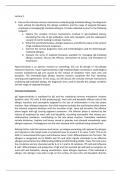
This essay covers all the content of lecture 5 of Immunology of Human Disease. It discusses Allergy and Asthma. The question is: Discuss the intricate immune mechanisms underlying IgE-mediated allergy, the diagnostic tests utilized for identifying this allergic condition, and the range of targeted therapies employed in managing IgE-mediated allergies.
- Package deal
- Class notes
- • 3 pages's •
-
Kings College London•Immunology of Human Disease
-
8 lectures on Immunology of Human Disease - 6BBBI608• Byines5
Preview 1 out of 3 pages
This essay covers all the content of lecture 5 of Immunology of Human Disease. It discusses Allergy and Asthma. The question is: Discuss the intricate immune mechanisms underlying IgE-mediated allergy, the diagnostic tests utilized for identifying this allergic condition, and the range of targeted therapies employed in managing IgE-mediated allergies.
